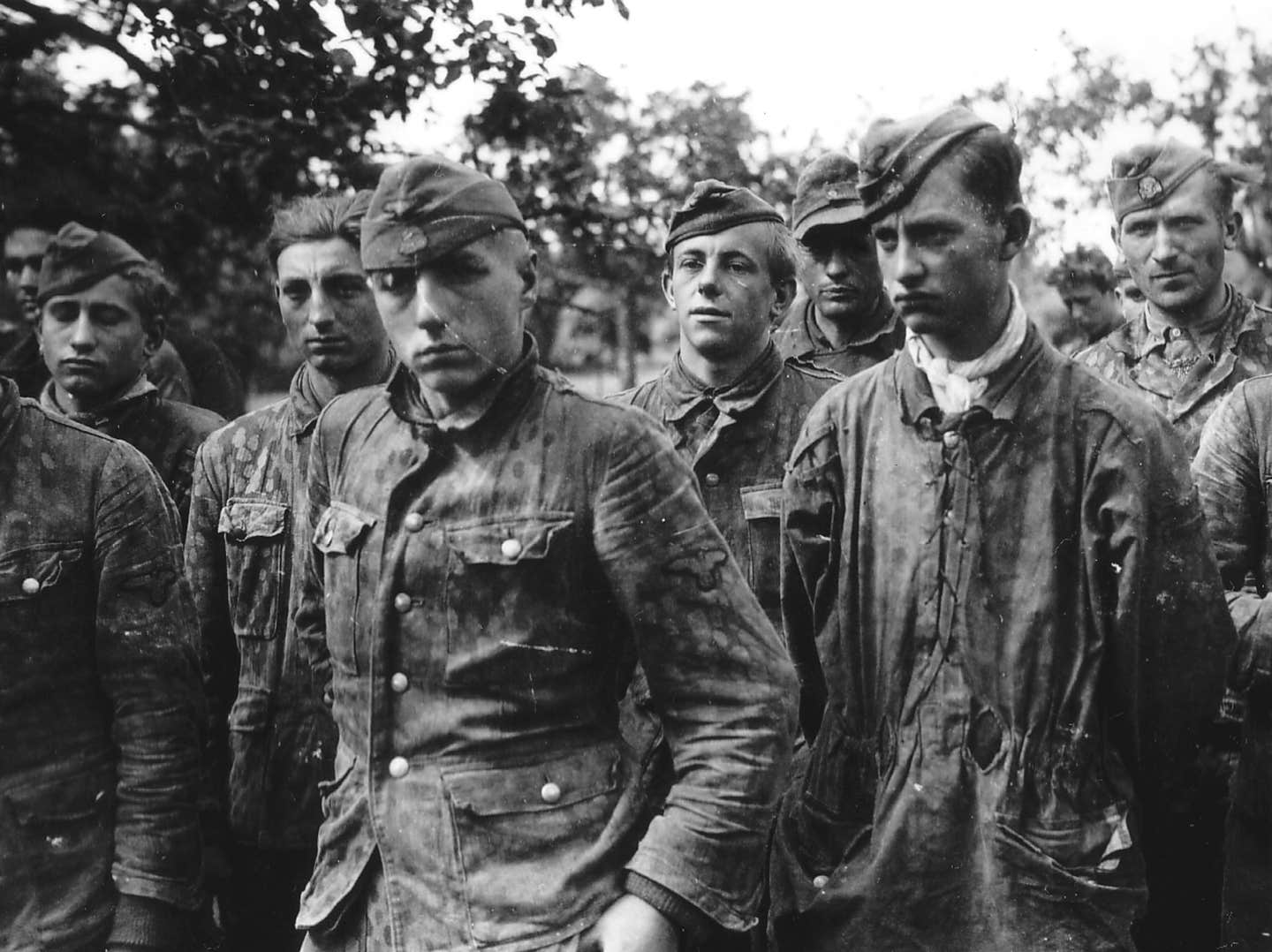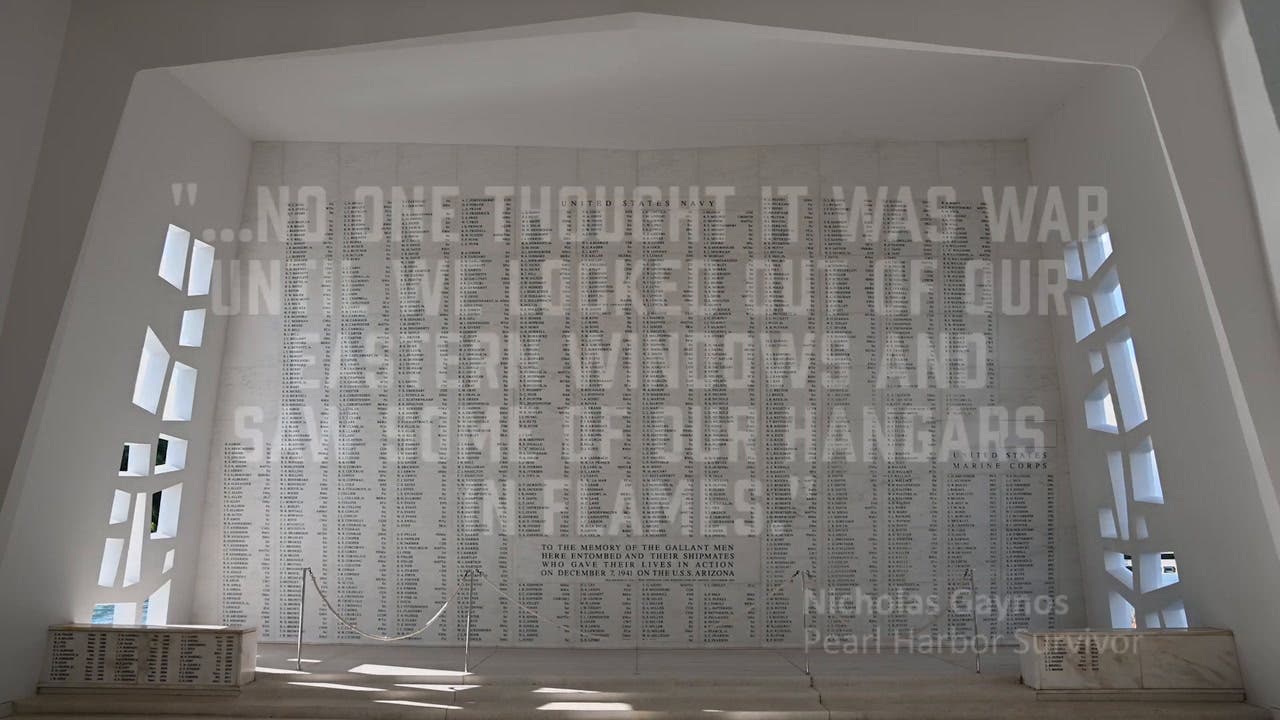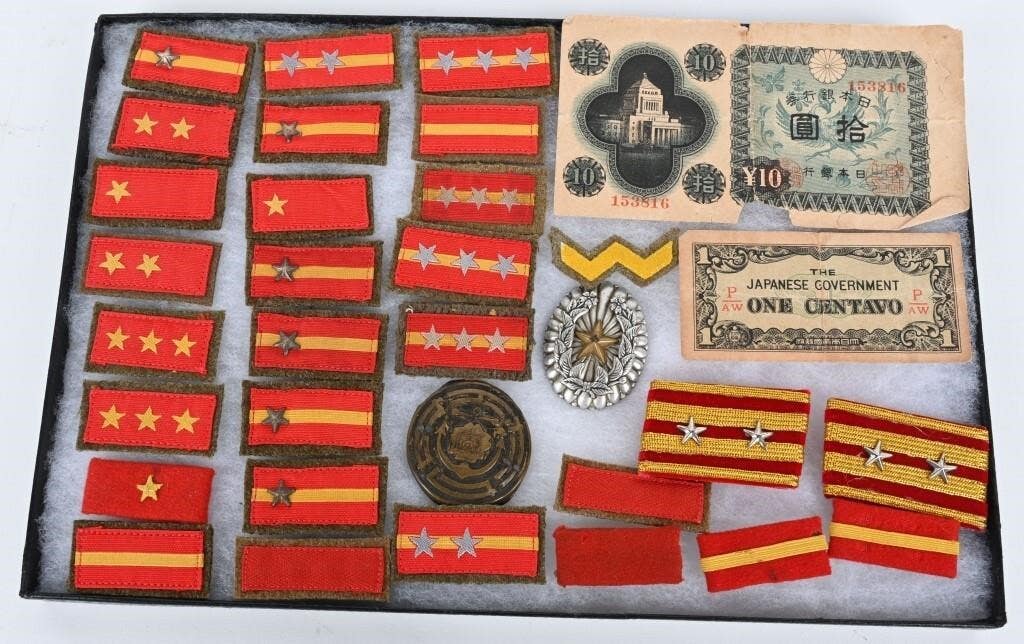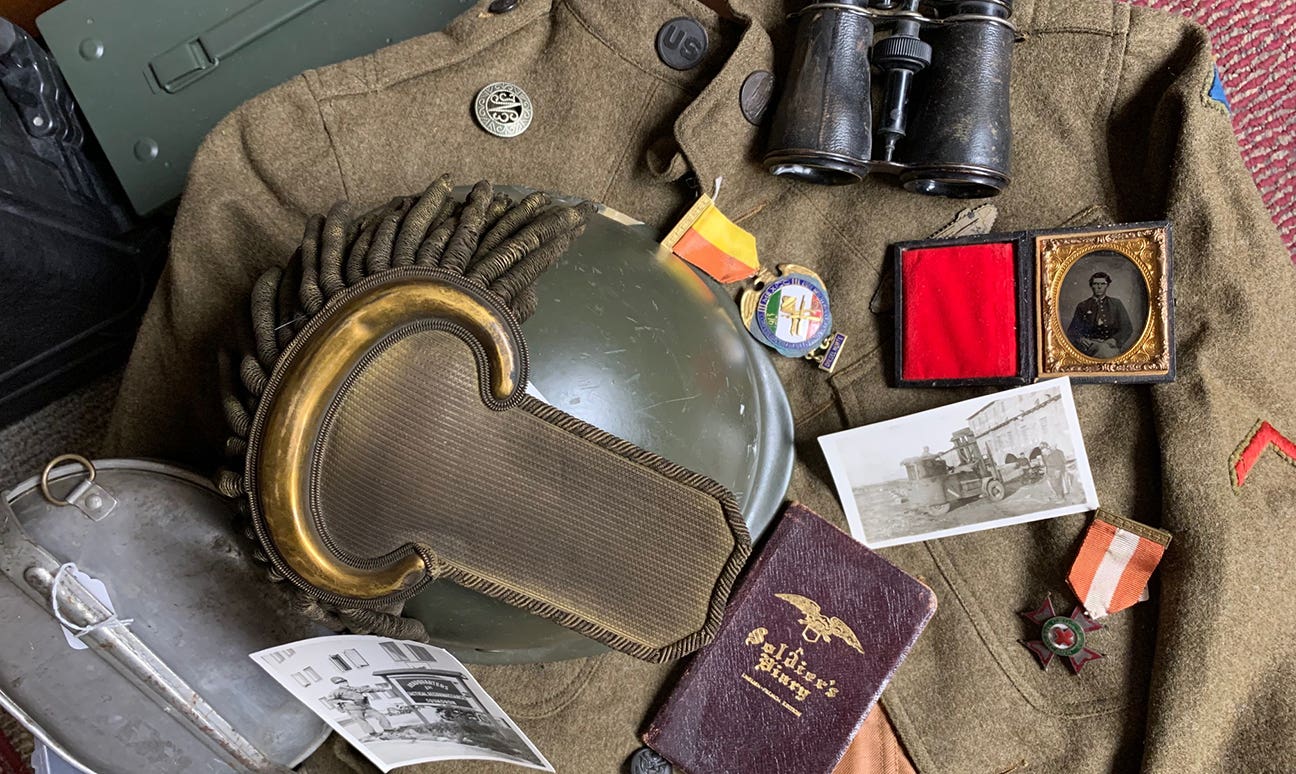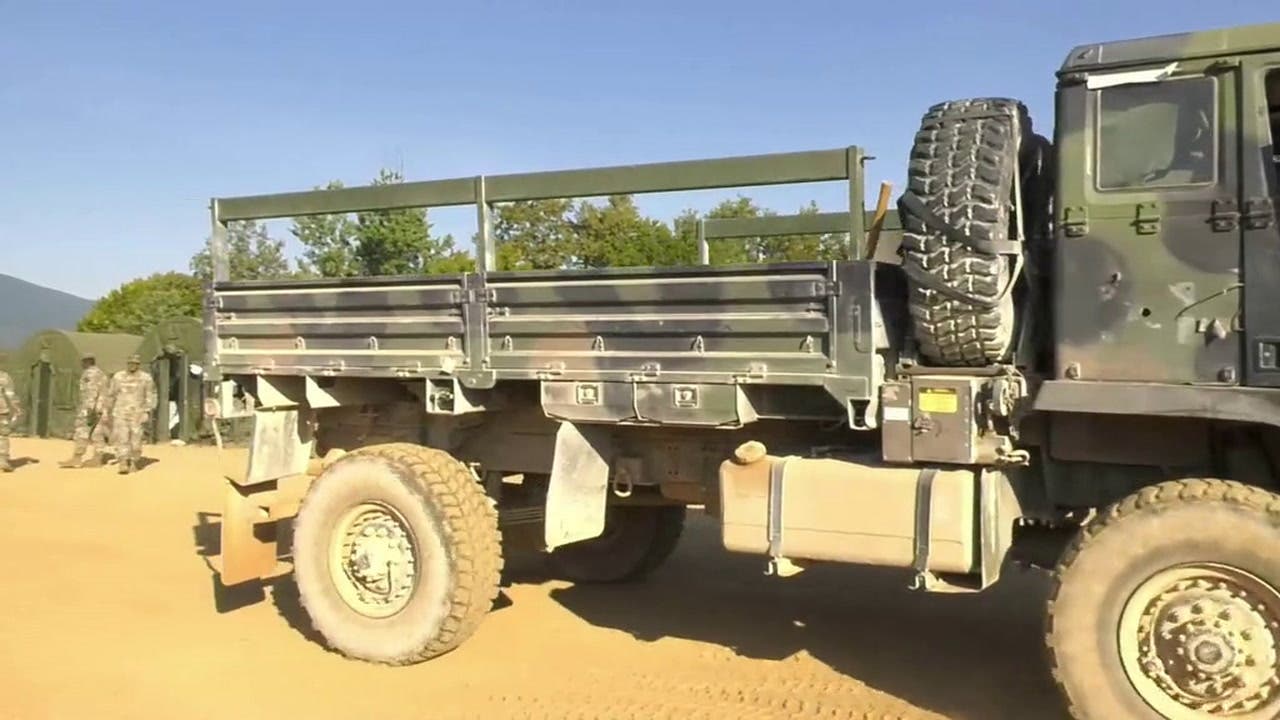How will War in Iraq impact hobby?
While many have said that War in Iraq is the “second longest war in America’s history” (citing the War in Afghanistan as the first), that is not wholly accurate. Many…
While many have said that War in Iraq is the “second longest war in America’s history” (citing the War in Afghanistan as the first), that is not wholly accurate. Many of the Indian Wars lasted decades, with the Sioux Wars being the longest covering the years from 1854 to 1890. Despite this hair-splitting of the details, Americans had grown weary of the War in Iraq. So when people began asking me what impact the end of the war would have on the historic military vehicle (HMV) hobby and militaria collecting, in general, they didn’t quite anticipate my answer.
THE WAR IN IRAQ
The 2003 invasion of Iraq (March 19–May 1, 2003), was the start of the conflict known as the Iraq War, or Operation Iraqi Freedom, in which a combined force of troops from the United States, the United Kingdom, Australia and Poland invaded Iraq and toppled the regime of Saddam Hussein in 21 days of major combat operations. The invasion phase consisted of a conventionally fought war which concluded with the capture of the Iraq capital Baghdad by United States forces.
Four countries participated with troops during the initial invasion phase, which lasted from March 19-April 9, 2003. These were the United States (148,000), United Kingdom (45,000), Australia (2,000) and Poland (194). 36 other countries were involved in its aftermath. In preparation for the invasion, 100,000 U.S. troops were assembled in Kuwait by Feb. 18. The United States supplied the majority of the invading forces, but also received support from Kurdish irregulars in Iraqi Kurdistan.
The invasion of Iraq led to an occupation and the eventual capture of President Saddam Hussein, who was later tried in an Iraqi court of law and executed by the new Iraqi government. Violence against coalition forces and among various sectarian groups soon led to the Iraqi insurgency, strife between many Sunni and Shia Iraqi groups and the emergence of a new faction of al-Qaeda in Iraq.
By June 2008, U.S. Department of Defense officials claimed security and economic indicators began to show signs of improvement in what they hailed as significant and fragile gains. On Feb. 27, 2009, President Barack Obama gave a speech at Marine Corps Base Camp Lejeune in North Carolina announcing that the U.S. combat mission in Iraq would end by Aug. 31, 2010. A "transitional force" of up to 50,000 troops tasked with training the Iraqi Security Forces, conducting counterterrorism operations, and providing general support may remain until the end of 2011, the president added.
The withdrawal of U.S. forces began at the end of June, with 38 bases to be handed over to Iraqi forces. On Aug. 31, 2010, Obama announced the end of Operation Iraqi Freedom from the Oval Office. The continuing occupation was now called, “Operation New Dawn.” The draw-down of U.S. forces in Iraq continued for the more than a year until Dec. 18, 2011, when the last combat troops left Iraq in a convoy for Kuwait where they would turn in their equipment and prepare for their return to the United States. Eight years and eight months later, the War in Iraq officially came to an end.
There were only minimal ceremonies and even less public awareness of the end of the war. No grand announcement on Times Square, no closing of schools, no fireworks or parties in the street. It was obvious by the Nation’s response, its people were tired of hearing of the War in Iraq. If not jubilation, they felt a great sense of relief.
SO WHAT’S THE IMPACT ON THE HOBBY?
With that reaction to the War’s end in mind, let’s return to the question, “How will the end of the War in Iraq impact the HMV and militaria hobbies?” The answer to the question needs to be addressed in two parts. First, we need to look at how much material survived and has come to the United States. Second, we have to examine the collectability of the War in Iraq.
How much material has survived? Well, there is no shortage of interesting militaria from the War in Iraq. Soldiers who served are much more aware of the collectability of insignia, uniforms and war souvenirs, so they wasted no time procuring “in-country-made” patches, picking up battlefield souvenirs or documenting their service in photos, video and audio recordings. Since the soldiers were required to purchase their own uniforms, many, many pieces will survive and enter the hobby through the coming years.
Although a lot of the useable militaria has been handed over to the Iraqi military, since the 2010 announcement of the impending withdrawal, a veritable military collector’s epic garage sale has emerged in Iraq. Bagdad’s Haraj market has seen mountains of AR .223 magazines, rifle bipods and body armor for sale mixed with piles of U.S. uniforms, accouterments and MREs (Meal, Ready-to-Eat). As the remaining 85,000 U.S. troops evacuated their bases, scavengers quickly descended to remove any fixtures, fittings or material left behind. Some of it has been sold at auction, most of it at open or black markets. Whereas the bulk of this material will find its way back to active service, it is inevitable that some will pop up on the collector market. This available supply will fuel collector interest.
Where there will be a real shortage, however, is in the realm of military vehicles. In the past, an end of a war meant that thousands of military vehicles would be released to the surplus market. The Department of Defense’s recent position that military vehicles should be destroyed rather that sold to the public means that no vehicles will be released through the usual method. If any vehicles from the War in Iraq enter the collector hobby, they will be vehicles left behind or sold to other nations that are subsequently released and imported to the U.S. via the gray market.
This leads to the second part of the answer to what impact the war’s end will have on the market. The War lasted for almost nine years, and regardless of how people felt about the mission or our troops, most Americans became increasingly tired of the War. It failed to become a “popular” war. Therefore, the nostalgia factor that drives the general public to collecting is missing. On the other hand, more than 1.5 million soldiers, sailors, Marines and airmen served during the War (for comparison, about 2.5 million Americans served in Vietnam). That is a substantial number of men and women who will start growing nostalgic about their service. This will fuel some interest in collecting the War in Iraq. Keep in mind, though, how long it took for collecting Vietnam to become a “respectable” hobby in the eyes of non-collectors. It may not take as long for the War in Iraq, but the number of those who served is much smaller.
So what is the answer? What impact will the end of the war have on our hobbies. Unfortunately, I am inclined to say, “Not a lot—at least not in the foreseeable future.” The first area to be impacted will be the patch hobby. In-country patches and unauthorized designs will command the highest interest. This will be followed by the headgear hobby, with unit and soldier-identified helmets be the most sought-after. Finally, medal collectors will be paying premiums for Purple Hearts, Bronze Stars and Silver Stars that come directly from the recipients. Uniforms (except those worn by elite forces) and accouterments will be stagnant and occupy far more space than they are worth for many years before ever commanding significant interest.
Almost entirely absent from the market will be any weapons or ordnance. It is just a different collecting world today than it was after WWII or even Vietnam. The chances of Berettas, M4s or defused frag grenades entering the legitimate market are extremely slim. Because so much privately purchased material was (and still is) available, non-official knives, weapons, field gear, uniforms, body armor or other material will not hold comparable worth to issued material. The exception to this, as already stated, will be non-official insignia that can be proven to have been made and worn “in-country.”
The impact will be very small on the hobby with the surplus side benefiting the most in these first post-War in Iraq years. If there is a way that surplus HMMWVs, MRAPS or even 5-ton trucks could be released into the market, that would be a major impact that would seriously bolster the hobby, but unfortunately, that doesn’t seem likely.
The biggest impact the end of the War in Iraq will have is that the 1.5 million soldiers are now out of harm’s way (in Iraq, at least), and that they will be free to pursue their own passion and interest. It is likely that many of these men and women will pursue an interest in the long, proud history of America’s armed forces, and, in turn, begin collecting the arms, uniforms, equipment, insignia and vehicles of their forefathers.
Regardless, we are glad our Iraq Veterans are home safe. We salute you and the nearly 4,500 of your comrades who didn’t make it back.
Enjoy the peace,
John A-G
Editor, MVM and MT
John Adams-Graf ("JAG" to most) is the editor of Military Trader and Military Vehicles Magazine. He has been a military collector for his entire life. The son of a WWII veteran, his writings carry many lessons from the Greatest Generation. JAG has authored several books, including multiple editions of Warman's WWII Collectibles, Civil War Collectibles, and the Standard Catalog of Civil War Firearms. He is a passionate shooter, wood-splitter, kayaker, and WWI AEF Tank Corps collector.



